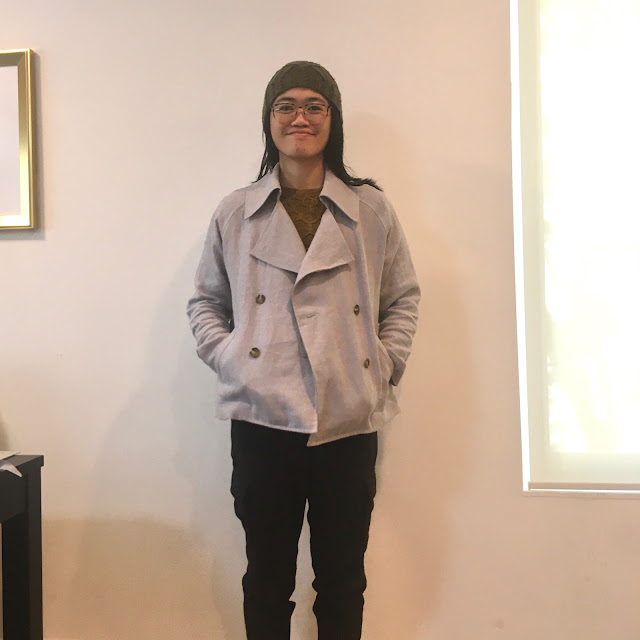Been on a coat/jacket sewing kick lately. Living in Los Angeles, it doesn't get too cold, so this Grainline Cortland Trench is perfect for the weather.
Specs
Fabric: 4C22 SILVER GRAY Softened linen for the outer. Cotton+Steel quilting cotton from my stash for the binding (leftovers from a dress I made a very long time ago, always loved this fabric)
Size: 0 (smallest size)
Mods: none at all! Made a muslin - sleeves fit great, length was good.
This pattern is an unlined A-line shaped trench coat, with bias bound seams. For some reason, there aren't many FOs of this pattern out there. I'm not really sure why but maybe I can speculate: the design is a little plain for some people; not many need a short unlined coat, more like a jacket anyway; bias bound seams scare a lot of people; released during the height of the pandemic so it slipped under the radar of a lot of people; smallest size finished bust measurement is 41" which is quite high.
Pros and cons
Whatever the reason, it's a shame because this is a great pattern. It's very well drafted; all my seams lined up well. The collar pieces were "a dream" to sew up. It was my first time sewing a bias cut under collar and that actually worked really well. I would like to incorporate it into other patterns. Also love how nicely the collar stands up. Probably one of my favorite collars I've sewn thus far, haha.
I did make the smallest size, which as mentioned ends up being a 41" bust, which is 9" of bust ease for me. If it were storebought, it almost looks like a medium on me. Especially with the A line shape where it gets even wider at the hip at 45.5", also 9" of hip ease. I would love if it were more like a 39" bust, which would skim over my handknit sweaters well. I thought about grading it down manually, or scaling it down on the computer, but I'm worried that would introduce other problems. The most I might do is to remove the A-line shape at the hip.
 |
| handstitched collar stand was actually very quick and looks very nice! |
A hybrid of seam finishes
So I didn't love that all the seams in this coat are bias bound (HK seam method). I much prefer flat felled seams, so that's what I opted for on the seams. The facing and the pocket edge pieces are bias bound. Unfortunately, the seam allowances on this pattern are only 1/2", which is not typically used for flat felled seams. But I made it work anyway. For the most part, it was alright, doable. It's a good thing my fabric is not too thick but if it were thicker, 5/8" seam allowances would definitely be required. I had trouble for the seam up the side and the sleeve, which is always a difficult seam but made harder with the narrow allowance. I'll definitely alter the pattern to have 5/8" seam allowances if I make it again.
Different welt pocket construction











No comments:
Post a Comment